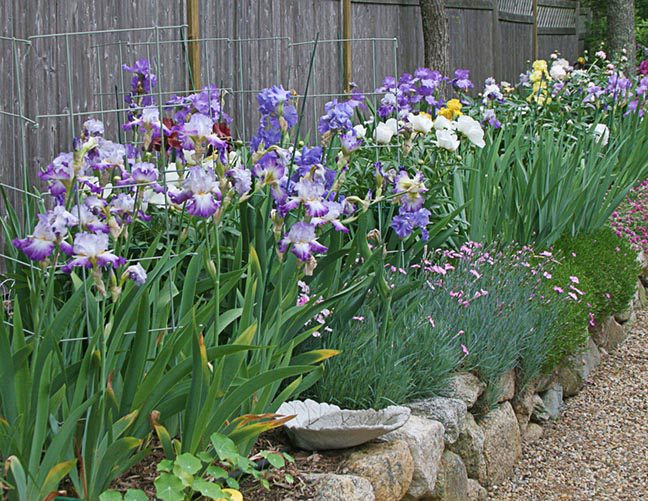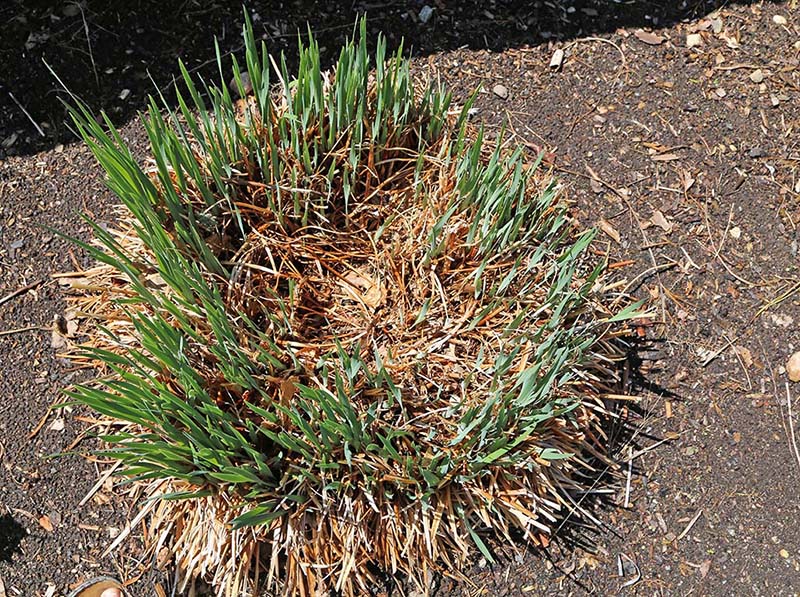Why Don't My Iris Bloom?
Why Don't My Iris Bloom?
The end of May and early June is Iris season on Cape Cod so it’s not unusual to have a customer ask why these plants are flowering in their gardens. There are a few reasons that your Iris plants may not flower, and sometimes their lack of bloom can be a combination of two or more circumstances. Here are the main reasons Iris may not be flowering:
1. Too much shade. Many times when people put Iris in the ground the area is sunny but over the years the shrubs and trees that surround them grow taller and without anyone realizing that this has happened, the Iris end up in more shade than sun. These perennials need at least 5 hours of dead-on sun including the noon hour. If your Iris have stopped flowering look at the plants every hour on the hour over the course of the day to be sure that they are getting enough sunlight.
2. Older clumps. If Iris have been in the ground for several years they can stop flowering either because they are crowded or because over time the soil has become compact and depleted. Siberian Iris often grow into a donut shape when they need dividing, and the center of the clump becomes empty, or worse, weed-filled. When Iris have stopped flowering well it usually helps to dig up the clump and cut a piece of the newest, most vital growth off. Cutting a chunk that’s about the size of a dinner plate usually leads good results. Give the extra pieces away or throw them into the compost. Before replanting, amend the soil over the entire area by first applying an organic fertilizer and on top of that spread a layer of compost or composted manure. Dig these into the area to mix them in which will also loosen the soil so that the plants can get reestablished easily. Place your clump in the center of the amended area.
3. Rhizomes too deep. When German (aka bearded) Iris are planted too deeply they won’t flower well. These Iris grow out of thick structures called rhizomes, and you should be able to see the top of those tan rhizomes on the surface of the soil. If you can’t see them, dig the plants up, scrape off the soil covering the rhizomes, and replant. Don’t cover the rhizomes with mulch either, as this is how the plants often end up getting covered over time. Our friend Deirdre pointed out that these rhizomes are actually part of the stem structure, not the root structure, which is why it’s important for them to be seen and not covered. Thanks, Deirdre!
4. Don’t neglect watering. If a plant is too try, it won’t flower as well as it should. Most perennials do best when given a deep soaking (one inch of water as measured in a rain gauge, not a carton or jar) once a week.


2 Comments
Leave a Comment
Subscribe To Our Newsletter
Sign up for our weekly email about sales and events.

I love Lupine and plant them each spring in time to flower. However, very few reappear the next spring. What do they need to be happy?
Susan,
Lupine love full sun and heavy soil…they are happiest in clay soils, not the sandy soil of Cape Cod. Even where they are happy Lupine are short-lived plants. They can self seed where the soil is to their liking, but usually they die after four or five years, and sometimes sooner. So if you love them, and must have them, grow them as annuals and if a couple return for a second or third year consider yourself blessed. If you have sandy soils you might want to grow something else that blooms at this time of year, such as Nepeta.